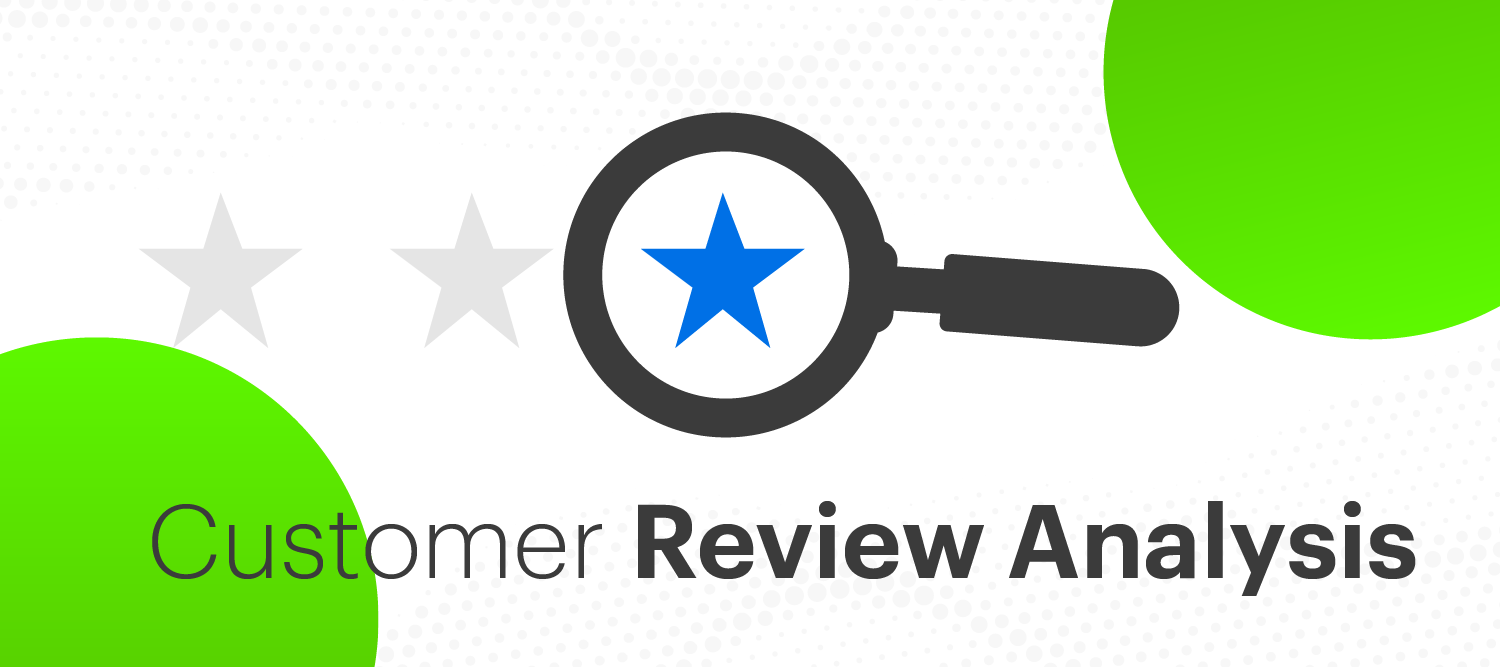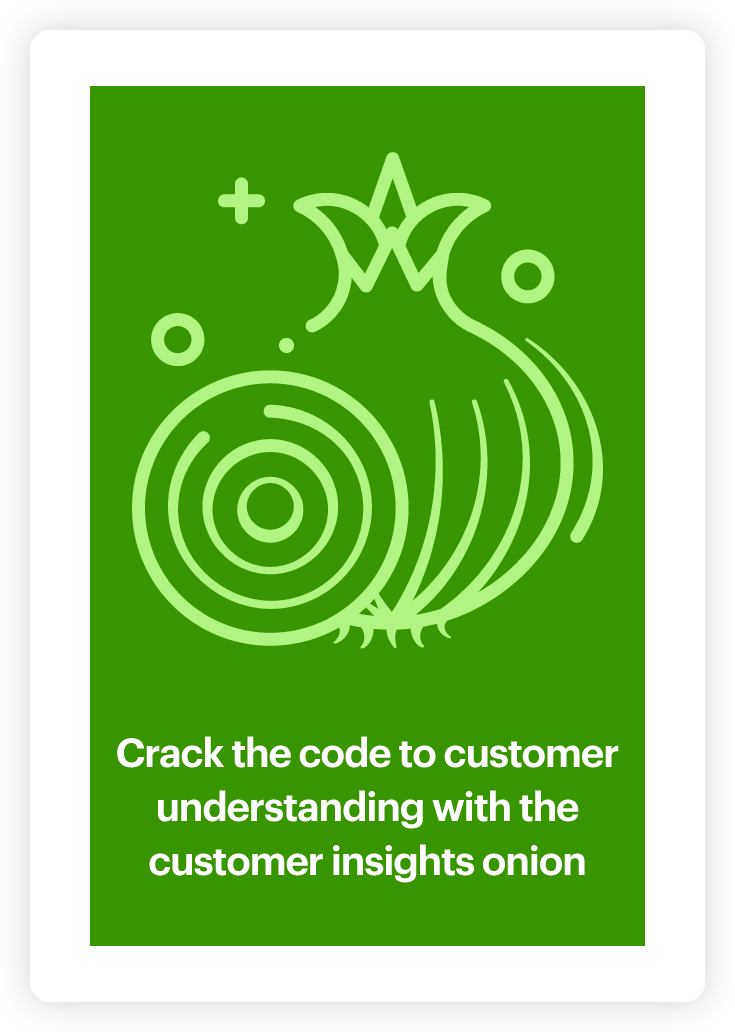How to analyze customer reviews

If you’re trying to find the best ways to analyze customer reviews, you’ve come to the right place.
It’s hard to imagine a world before online reviews. In 2021, you would never buy a new camera without knowing what everyone else thinks about it first. How else can you confirm the image quality, display format, technical capabilities, battery performance and shooting speed are all up to par? Consumers trust online reviews – even if they have no idea who wrote it.
For brands, the benefits of online reviews are twofold.
- Good reviews are a great source of organic exposure and are likely to drive increased sales.
- Text analysis of reviews can help organizations better understand their customers – generating customer insights concerning their preferences, expectations, complaints and opinions.
Why do customer reviews matter?
Reviews and online ratings are becoming an increasingly powerful influence on purchasing behavior. Although we’re word people here at Relative Insight, here are some numbers that capture the importance of cultivating positive public praise from your customers.
- 97% of consumers research local products or services online.
- 91% of 18-34 year olds trust online reviews.
- 93% of consumers claim reviews impacted their purchasing decision.
- Customers are willing to spend 31% more on a well-reviewed product.
- Only 13% of customers will consider a 1 or 2 star business.
- 4 out of 5 consumers changed their mind about a purchase after reading poor reviews.
To sum all that up: you will not succeed without good reviews. Online ratings are a double-edged sword. Not only are positive reviews a great way to increase sales, negative reviews are a surefire way to lose potential customers.
Where can I find customer reviews?
When setting out to analyze customer reviews, the first step is acquiring them. These can be taken from third party websites that sell your product like Amazon or platforms dedicated to collecting reviews such as Trustpilot. Reviews from these sources are typically unsolicited, which can help ensure objectivity.
Reviews can also be requested directly from customers through email newsletters, customer service interactions or purchases. In these cases, reviewers can be offered an incentive, which increases the volume of customer feedback but potentially taints the data.
Consumer review sources
- Yelp
- Amazon
- BBB
- Yellow pages
- Trustpilot
- Seller websites
- Yahoo
B2B review sources
- G2
- Capterra
- GetApp
- Clutch
- Serchen
- TrustRadius
- GoodFirms
How can I mitigate bias?
The next step in our journey learning how to analyze customer reviews is to ensure you’re working with a large and diverse sample of reviewers. If the sample of reviews does not represent your consumer base, results will be skewed. It’s crucial to minimize any potential bias in review analysis.
The best way to do this? Take a cursory skim through your data. Reading a few comments will give you an idea of the quality of responses, and looking at any associated data points can help you be confident you’ve got data from the audience(s) you’re most interested in.
It’s also important to watch out for obvious signs of bad reviews. We suggest cleaning your data prior to any analysis as these fraudulent reviews can mislead your results, leading to faulty insights. Weeding out spammers and fake accounts increases the veracity of analysis.
Questions to ask yourself
- How many reviews do we have?
- How many words does the data set consist of?
- Does the sample of reviewers reflect our customer base or specific segment we’re interested in learning about?
- Were reviews incentivized?
Things to look out for
- Inaccuracies: If information within the review or cross referenced against metadata just don’t line up, you probably have a bad review.
- Spamming: Spammers love review sites. Exclude reviews that include common spam triggers like meet singles, earn extra cash or get out of debt.
- CTA: Any review that includes a call to action like click here or email me is also likely spam.
- Copy and paste: Sift through data looking for duplicate reviews as spammers will often copy and paste text, which could inflate the importance of these faulty reviews during analysis.
If you’re worried about the quality of your data, try to collect a bigger sample. If you are unable to collect more reviews or correct bias, keep in mind the potential inaccuracy of results. Analysis can still be done, but the insights may be less reliable. There is no magic number that ensures accuracy – but as always the larger the sample size, the better.
Understand reviewer profiles
The information behind the reviewer is equally as important as the review itself. Recording reviewer attributes creates a metadata-rich source of information. This additional layer of data allows you to identify trends and correlations based on customer profiles.
It can be helpful to record
- Age
- Location
- Gender
- Date of purchase
- Item(s) purchased
- Overall rating
- Income range
- Level of education
- Review channel
You might discover that customers in California are more likely to say shipping takes too long. In that case, you have the insight to change shipping providers or opt for a faster shipping option for orders on the west coast.
Without location information, you might assume this problem applies to customers in all locations. Knowing this issue is exclusive to California means you only need to spend more money on shipping for orders to one state – not 50.
Or you might learn that customers over the age of 65 have trouble installing your product. This insight tells us that writing clearer instructions based on review input will ease the barrier to use and allow you to target an older age demographic.
But if your target audience is under 35, you might not want to address comments from consumers over 65. Knowing age allows you to quickly sift through reviews to find input from relevant demographics – saving you time and money.
How to analyze customer reviews
At this stage, you’re confident in the quality of your data and you have collected associated data points to help you understand the profile of each reviewer. Now it’s time for analysis. What we’re looking for are trends within the data that tell us more about a target audience or brand. Said audience or brand will of course depend on your unique objectives, but here are a few ideas:
- Discover common customer complaints
- Track opinion over time
- Understand target demographics
- Learn what consumers expect from your product
- Compare your reviews to competitors
This can be done by sifting through reviews and manually coding significant details to discover trends – but I have a better idea.
Relative Insight is your key to unlocking the most value from customer review data. Our automated NLP technology streamlines the analysis process to clean and analyze the data for you. We approach review analysis through the lens of comparison, which creates contextual understanding within the insights. Not only can you discover common customer complaints – you can analyze how those complaints differ from other demographics, time periods, review channels and more.
Ultimately, the outcome of analysis is dependent on your goals as a business. There is no one way to act on the information you find. Analysis can tell you what’s happening and why, but it’s up to your business to decide the best course of action.
What makes Relative Insight different?
Comparative text analysis extracts powerful consumer insights from any textual data source – surveys, reviews, social media and more. Our one-of-a-kind technology compares two or more written data sets to discover what makes each unique. This method highlights the significant differences and similarities in topic, words, phrases, grammar and emotion.
For example: Simple frequency analysis can tell you what men are saying about your product, but not how those opinions differ from women. With Relative Insight, you can gain a deeper understanding of both demographics – giving your brand the insight to target men and women using messaging that addresses each group’s unique needs. This concept can be applied to any consumer demographic, time period, engagement channel and more.
Enhanced review analysis
Relative Insight approaches review analysis through the lens of comparison. This additional layer of contextual understanding helps you to discover what makes an audience unique. Our Natural Language Processing technology streamlines the analysis process to quickly discover trends, track conversation, monitor voice of customer data, or conduct competitor comparisons. Also take a look at our customer insights examples for businesses to see what other types of consumer insights research we can help you fasttrack.
Related reading:
Case study: Developing effective customer service practices using Google Reviews
